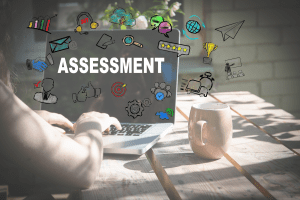
As we come out of isolation and social distancing, we’re interacting with others more than we have in a long time. There’s less working on the sofa in sweatpants and more heading to the office in pants with zippers. Are you finding post-COVID communication tricky…and your skills rusty? You’re not alone.
Nonetheless, being able to effectively communicate with your superiors, your coworkers and your staff members is essential in the workplace. If you’re thinking, “I’ve forgotten how to have a normal conversation with someone,” that’s valid. However, keep in mind that effective communication entails more than talking.
As Indeed shares in “Communication Skills for Career Success,” there are several types of communication. These include:
Verbal. Here’s where talking comes in. To speak effectively, speak with confidence. Avoid filler words, and use business jargon only when necessary. Speak clearly and loudly enough for others to hear you, and be sure not to ramble on.
Nonverbal. Your body language and facial expressions say a lot, without a sound. Whether you’re in a meeting or having a casual conversation with a colleague, maintain eye contact and respect personal space. Be mindful of your physical responses to what others say. If your arms are crossed, for example, you can appear to be unreceptive to what someone is saying. Leaning forward in your seat or nodding, on the other hand, conveys interest.
Written. When you’re putting things in writing at work, keep the writing simple and uncluttered. Use bullet points to highlight key points, as people tend to skim documents rather than read them from start to finish. Always, always proofread your work. Consider asking another team member to proofread your document as well for an additional quality assurance measure.
Want to shake the rust off your communication skills? We have a variety of communication courses you can take online, at your convenience. Choose from:
- Communicating Collaboratively
- Effective Business Writing
- Effective Emails, Memos, and Letters
- Effective Presentations
- Effective Public Speaking
We offer an online Business Communications certificate program as well.
So dust off your office clothes and your communication skills. You’ll be ready to face the workplace with confidence.
Email us at learn@corexcel.com to learn more.
Source: Indeed, Examples of Nonverbal Communication in the Workplace









